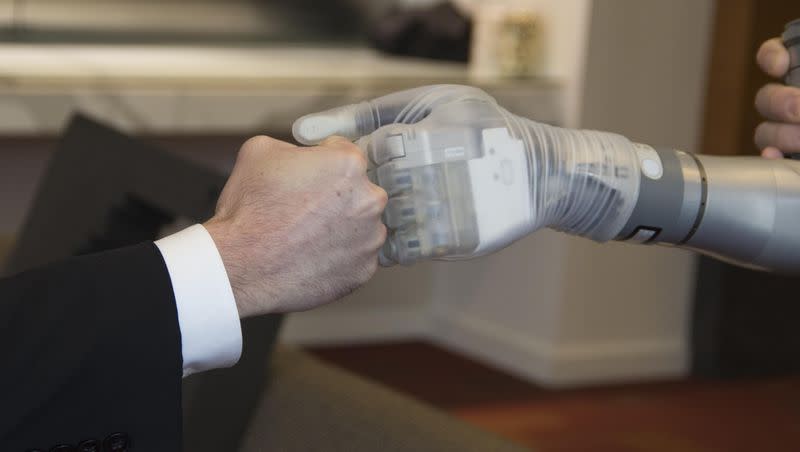Prosthetic breakthrough allows individuals to regain a sense of touch

Prosthetics design has been fairly stable for a number of years. Recently, however, researchers have made a breakthrough in their studies, inventing prosthetics that connect to the individual’s brain to create a sense of touch when the artificial limb is used.
Scientists and engineers studying sensory restorations began a program in 2006 called the Defense Advanced Research Pojects Agency’s Revolutionizing Prosthetics program, in hopes of giving soldiers who lost their limbs in battle a more realistic replacement.
When asked about the most difficult parts of the research in 2009, engineer and inventor Dean Kamen, who works on the team for prosthetics, replied, “All of it.”
It was in 2012, however, when the initial breakthrough of connecting artificial limbs to the brain for the purpose of creating the sensation of touch began. Scientists from the University of Pittsburgh teamed up with the prosthetics program after making a discovery involving a woman who had quadriplegia, Jan Scheuermann.
According to CBS News, “An experimental surgery implanted two sensor arrays, each the size of a pea, on the surface of Scheuermann’s brain. Then they were wired to two computer connections called pedestals. Within months, Scheuermann was able to control a robotic arm with nothing but her thoughts.”
Scheuermann was able to open and close her fist but struggled to pick up objects. Since that initial research 11 years ago, research has progressed: “Now, not only can people with spinal cord injuries and amputations control prosthetic limbs with their minds —including grasping objects — the advanced prosthetic can also return a sense of touch to their brain.”
Related
‘There’s no end in sight’: How COVID-19 changed a Utah teacher’s life
Autism increases for all children in US, especially among children of color
New sense of touch
A study done on four individuals suggested that they were able to have some type of sensation with the prosthetic limb-to-brain connection.
Pat Bayne, one of the individuals, who lost her arm due to infection, described the feeling. “I know there’s no hand there, but I can feel it,” she said. “They can make the palm of my hand feel like it’s the palm of my hand. It’s pretty exciting.”
One person in the study found improvement in her balance after using a prosthetic foot, according to Lee Fisher, a biomedical researcher at the University of Pittsburgh.
“We saw what look like improvements in her balance control during standing, her stability while she’s walking, and also maybe some improvements in her confidence as well,” Fisher told NPR.
Scientists are hoping their ongoing research will be able to increase independence for people who depend on prosthetics — and the same technology could perhaps be used to enable those who use a wheelchair to have more mobility.

